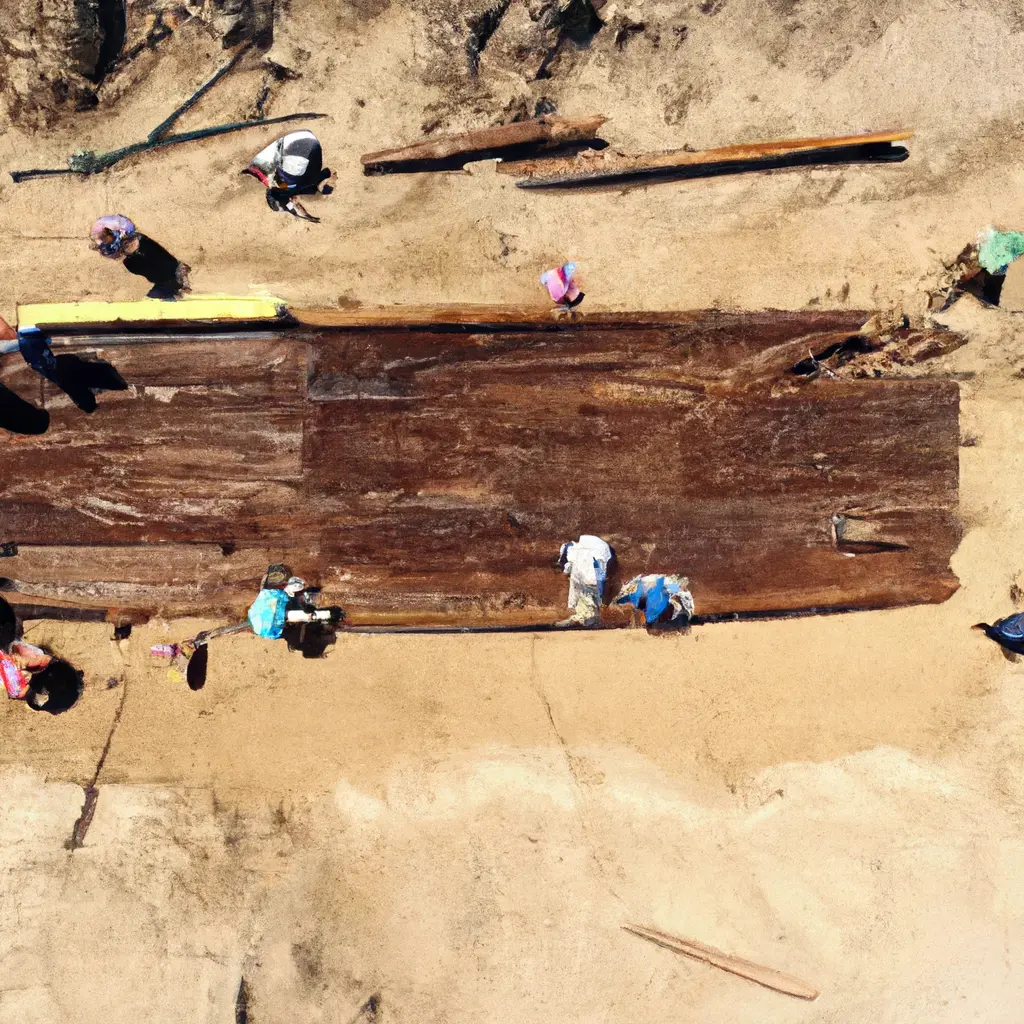A Roman 42-foot ship has been discovered in Serbia, part of an ancient river fleet!

In Serbia, while miners were working at the Drmno coal mine, ancient wooden parts of a Roman ship were accidentally discovered, likely belonging to the ancient river fleet of the 3rd-4th century AD.
The length of the hull is 12.8 meters, and the entire archaeological site is located near the ancient Roman city of Viminacium, just 1.6 kilometers away. Due to this proximity, it is assumed that this ancient vessel transported supplies along the small rivers between the Danube and Viminacium, which also served as a military border and base for the Romans.
This find was discovered inside the surface coal mine in Drmno, located about 50 kilometers east of the bustling city of Belgrade. The components of the ancient vessel were hidden under layers of silt, about 8 meters below the surface, reports "All About Archaeology." Since 2020, two ships and three canoes have been found at this site, and archaeologists believe they have excavated only about 5% of the area. Another ship was also discovered nearby the Mlava River.
Serbian miners have discovered the remains of a Roman ship, which likely supplied an ancient city on the border and a military base. The gradual excavation process has revealed the remains of the ship, hidden on a vertical wall of the mine. The project's chief archaeologist, Miomir Korać, suggests that the ship dates back to the 3rd-4th century AD. He also notes that it could be Roman, but the exact age is unknown. The ship is about 20 meters long and 3.5 meters wide, and its flat-bottomed design indicates that its main purpose was to efficiently transport goods between the Danube and the settlement.
Viminacium
Viminacium, a neighboring Roman settlement, was established as an important stronghold on the border of Upper Moesia in the Roman Empire after 87 AD. It quickly became a center of commercial activity and had over 45,000 inhabitants. Viminacium held strategic significance and was fortified by several Roman legions to counter attacks from the north. The city was destroyed by the Huns in 411, but was rebuilt in the 6th century by the Byzantine Emperor Justinian the Great. However, in 582, the city was destroyed by the Alans.
At the excavation site, decorated tombs, remnants of ancient gold and silver processing workshops, as well as remains of squares, fortifications, and defensive walls for the protection of the city were discovered. Well-preserved baths, a chariot racing track, and a grand amphitheater that could accommodate up to 12,000 spectators were also found here. In 2021, the remains of 13 dogs were also discovered in the amphitheater, indicating an ancient connection between humans and animals.
Comment
Popular Offers

Subscribe to the newsletter from Hatamatata.com!
Subscribe to the newsletter from Hatamatata.com!
I agree to the processing of personal data and confidentiality rules of Hatamatata














